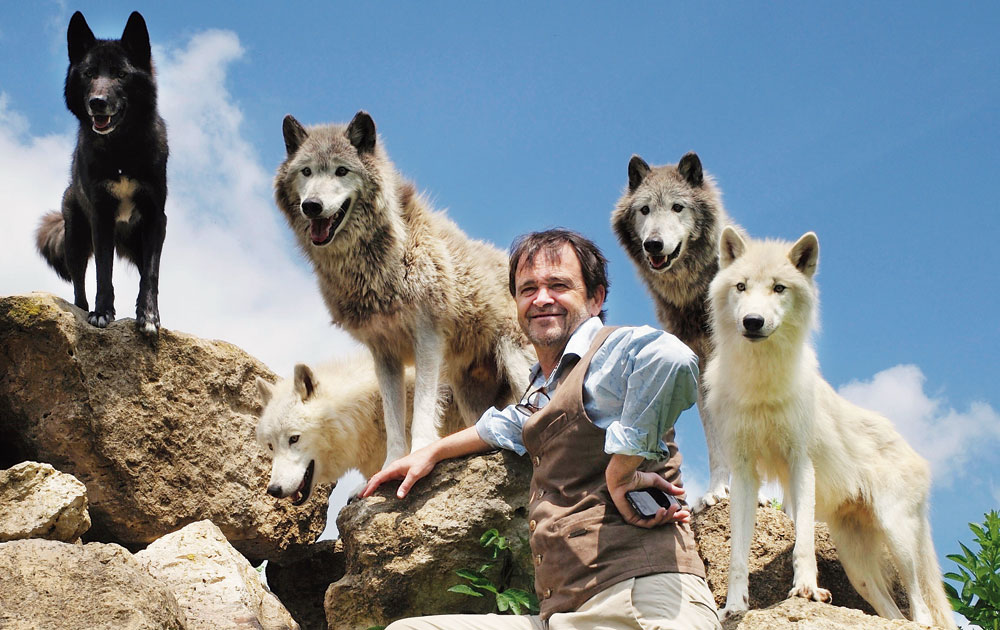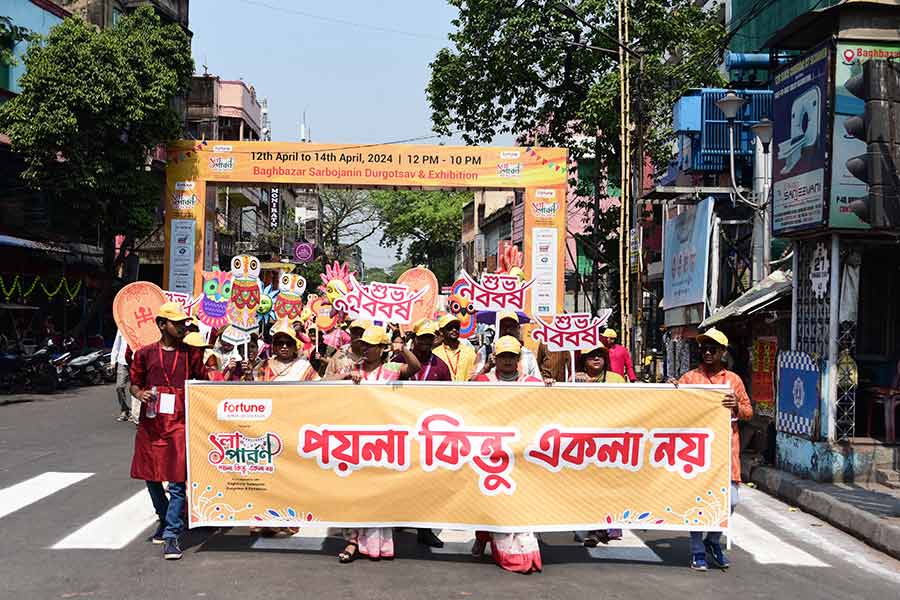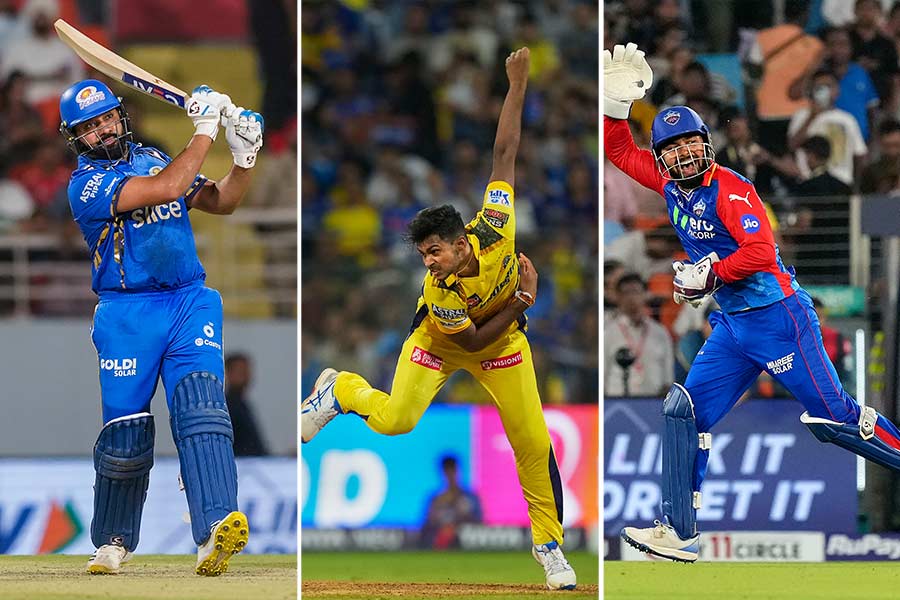A two-hour special docu-drama, First Man, premiered on Discovery Channel sometime back. It took viewers on a 25-million-year journey back in time to explore the roots of the man. Directed by Frederic Fougea and Jerome Guiot — with scientific direction from Pascal Picq, the renowned paleoanthropologist at College de France, the 90-minute film is a follow-up to the trilogy of Odyssey of the Species, Homo Sapiens and Rise of Man. In a phone interview with The Telegraph from Paris, Frederic spoke about his new film and more.
Tell us about the concept of First Man and how you approached the story?
It’s known that the origin of mankind is fascinating and it’s been changing. In the past 10 years there has been so many discoveries. This film is for the audience to know how we now see the evolution of man and how we imagine the modern man… the whole process. Like, walking on two legs… initially we thought it came from apes, they had to stand up. But it actually came from hanging from trees… verticality and walking on two legs came from the trees and not on land! The apes invented bipedalism, which is one of the new discoveries that we found and there are many more.
What are some of the other new aspects about apes the series touches on?
The evolution of the social structure of the great apes is very interesting. We know now that for millions of years, the structure of groups were dominated by females and not males. Males were going from one group to the other and females were the basis of social structures. Family structures were totally dominated by females and it’s only with the uprising of different lifestyles, that males took over and invented politics and war.
The whole evolution of the social structure that lead to us is very interesting. Two million years ago when we started hanging around and moving outside Africa and going to India, resources were scarce. There was very little to eat and in those conditions, we know now, the social structures changed — many females would gather around one very powerful man for protection. There was a big change because before that, while living in the forest, there used to be a lot of food and females were in charge. When we started travelling around the world, a big change happened and the power of male came in strong at that time.
We also know that the concept of funerals, rituals came from the apes — the chimpanzees, we know now, had funerals and rituals. It’s not a human invention, it’s a much earlier invention. Another thing we now know has to do with our idea of humankind — the ability to tell stories. All that we think makes us special, like laughing, intelligence… we find that in other animals. The only thing we don’t find (in them) is the ability to tell stories.
Can you tell us about the prosthetics and make-up — based on fossilised skull and teeth — that have been used to make the characters look authentic?
The idea was to use actors because of the situations but the skull and cranium were so different, so we had to ask a fantastic artist who worked in the The Revenant... he made all sorts of prosthetics so that all the characters look like our ancestors. We worked on creating craniums and prosthetics and we tried to make all the craniums look different. It was also very important to teach all our actors to walk and behave like our ancestors, to move around like them. It took six months of preparation for each actor.
How did you become a film-maker? Was this always your passion?
It happened when I was living in India for a long time and I wanted to keep on travelling through India. This was sometime between 1979 and 1987... I needed to make a living because I wanted to keep travelling. I found a beautiful story of a mahout in Kerala and I proposed it to some channel and they accepted the idea of making a film on it! So I became a film-maker because I wanted to keep travelling across India (laughs)... that was the start. The film was quite successful, so I kept on. That’s how my career started.
What do you like most about India?
India is my heart country, it’s where I feel there is so much faith and intensity. I love the atmosphere between the people, their relation with nature and the beauty of nature and life in India... the sweetness. India has always been my passion. I don’t favour cities; I love villages and nature. I’m fond of Kerala, the north, like Uttar Pradesh... I’ve always mostly hung out outside the cities.
Among cities, Mumbai is fascinating. I was a student of Indian Institute of Management (IIM) Bangalore and I’ve been to many places... Madurai was a nice place.
Artistically, is there a different way you shoot when it comes to a TV series as opposed to cinema?
I think it’s not that different in shooting, as it is in post-production because television screens are small. So you have to use more close-ups during editing but in cinema you can use wider shots. It’s more on editing that you’ve to pay attention, so as to not lose the attention of the audience.
Another difference is the narration and the script — when many people are sitting in a dark room watching a film, you don’t need to keep them... they are already there and not moving. In television, you’re competing with other channels and people are doing different things at the same time. So you have to keep a tense relationship with the audience, you can’t lose them... you don’t have the time to let them guess. Also, there are different techniques in lighting that we use.
You’re also a saxophone player and have a jazz band.
My family has a history of music and it’s a family of musicians. When I lived in India, I was into Carnatic music quite a lot. I played Indian classical music with the sax and I played with many classical musicians in India. I did a lot of fusion concerts with the sax combined with the tabla or the veena. It was very nice. Now I mostly play jazz... my band is called Messe Caline which means ‘sweet mass’.
What’s the one advice you’d give budding documentary film-makers?
Try to look at things in a way that you can tell a good story. Don’t look at nature as a collection of species just hanging around... look at nature as people, as individuals. Every animal is different; they have their stories. Don’t try to generalise, every character and every creature is specific — whether it is a bird or human. A good story lies within the characters... what they want and what they can’t have.






